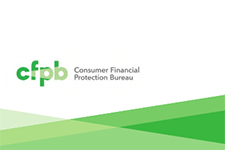Using a dataset covering one quarter of the U.S. general-purpose credit card market, we document that 29% of accounts regularly make payments at or near the minimum payment. We exploit changes in issuers' minimum payment formulas to distinguish between liquidity constraints and anchoring as explanations for the prevalence of near-minimum payments. Nine to twenty percent of all accounts respond more to the formula changes than expected based on liquidity constraints alone, representing a lower bound on the role of anchoring. Disclosures implemented by the CARD Act, an example of one potential policy solution to anchoring, resulted in fewer than 1% of accounts adopting an alternative suggested payment. Based on back-of-envelope calculations, the disclosures led to $62 million in interest savings per year, but would have saved over $2 billion per year if all anchoring consumers had adopted the new suggested payment. Our results show that anchoring to a salient contractual term has a significant impact on household debt.
The Potential for Savings Accounts to Protect Young Adult Households from Unsecured Debt in Periods of Macroeconomic Stability and Decline


